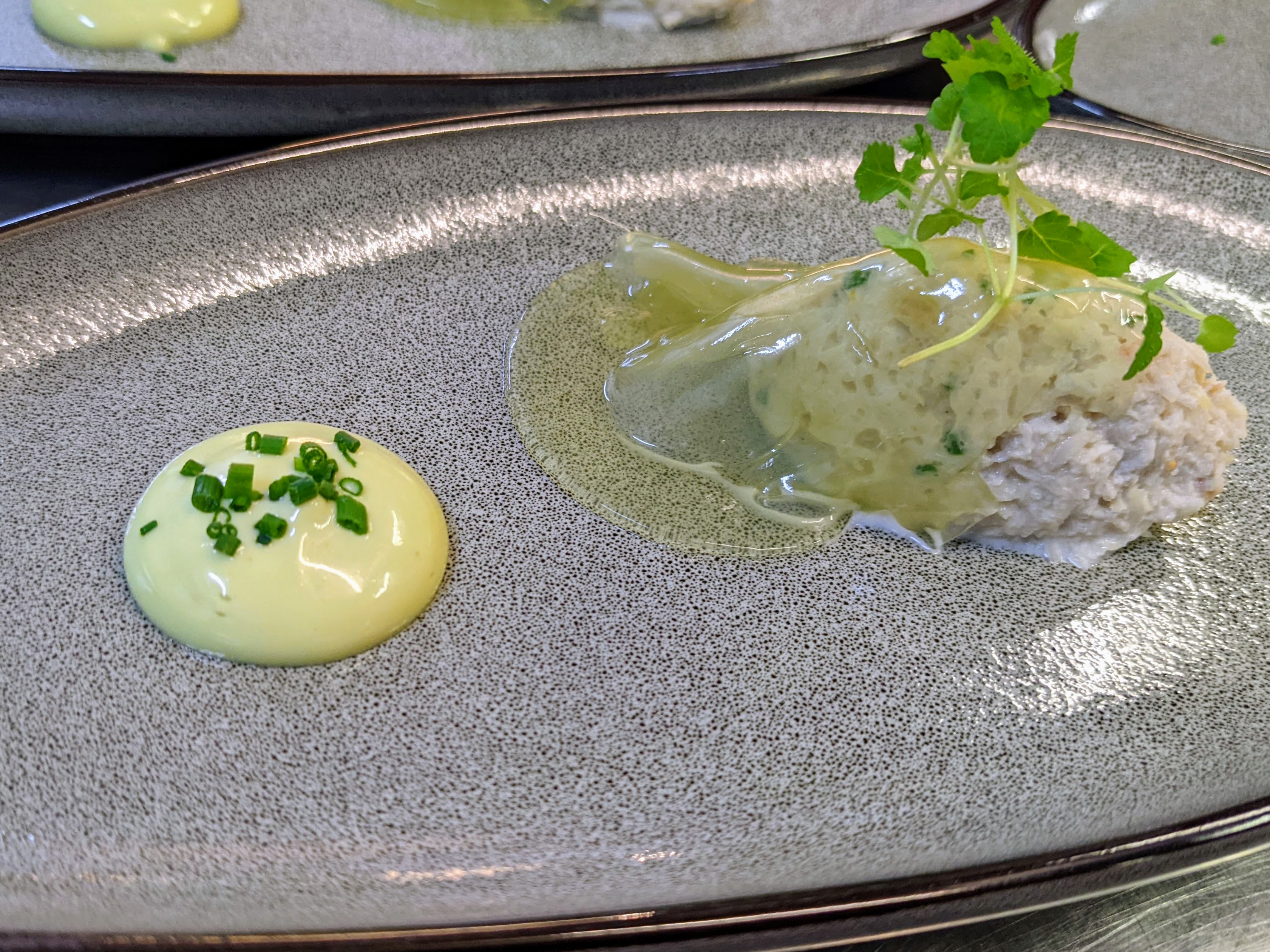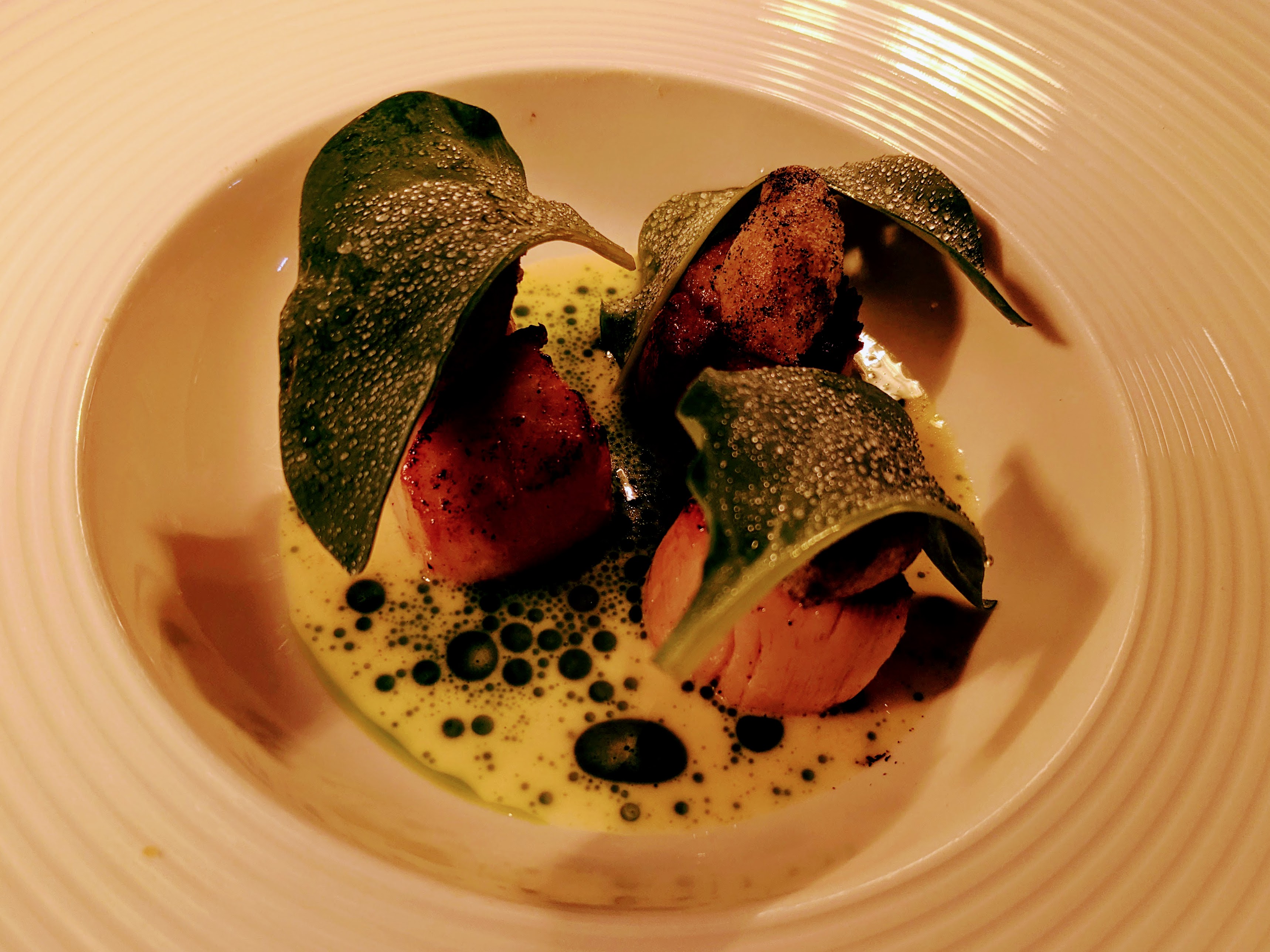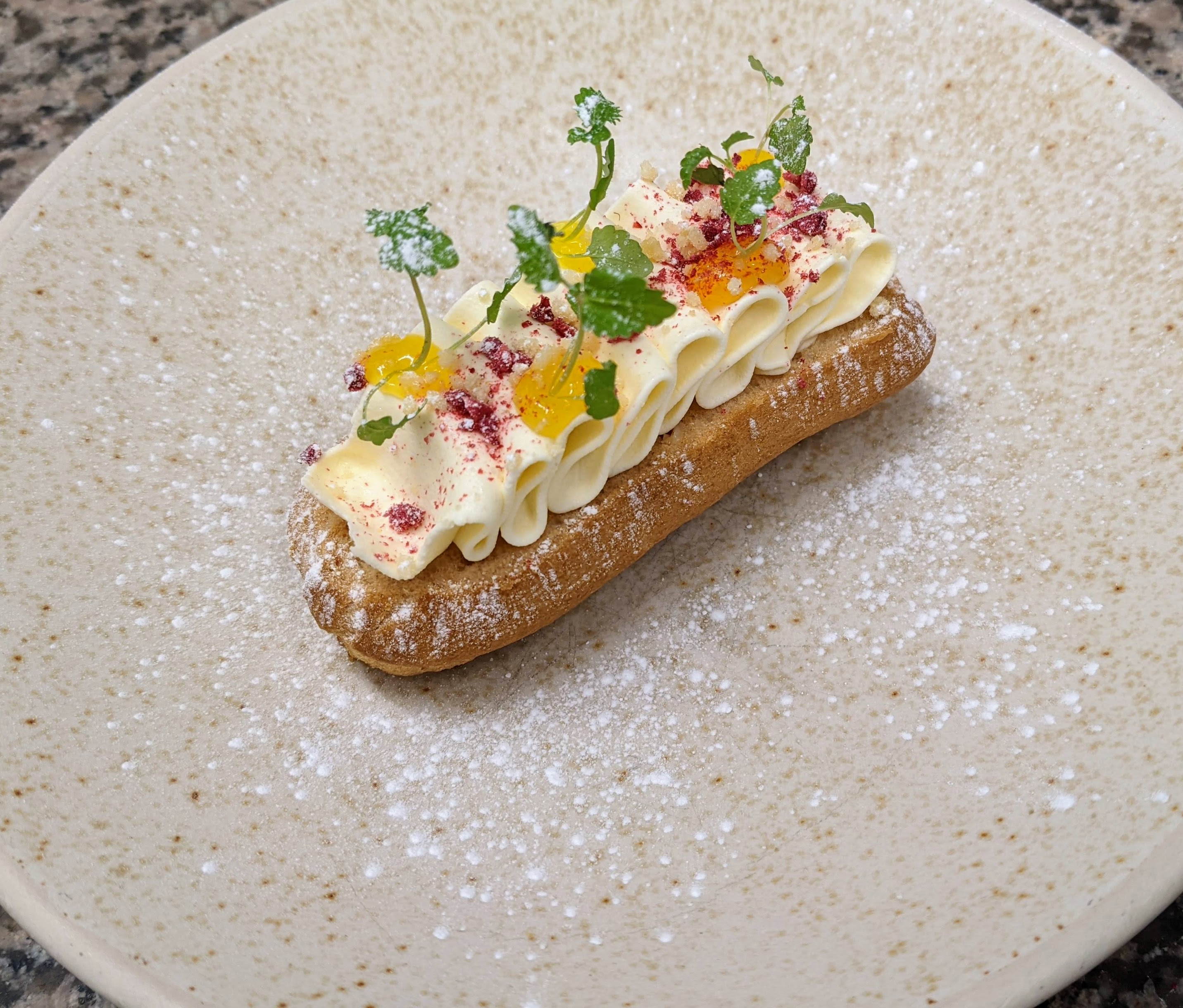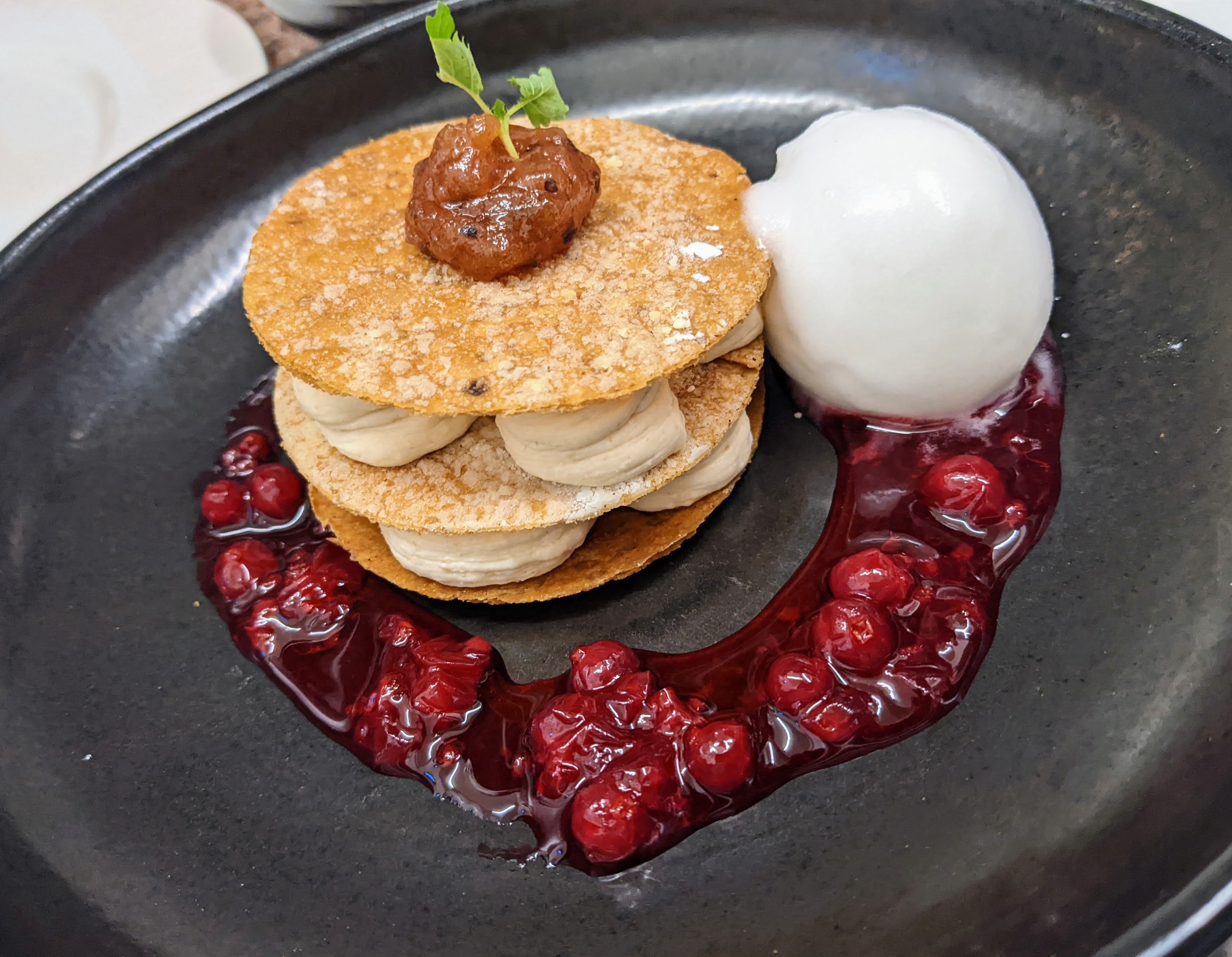White Crab with Cucumber Jelly and Tarragon Emulsion
A delightful Apéritif, this dish combines the best part of the crab, the white meat, with a palette-cleansing cucumber jelly and a tasty tarragon emulsion. Don't worry if you can't get white crab - brown will do, but white is much preferred.

Ingredients
Dressed Crab
- 250g pasteurised white crab meat
- White wine vinegar
- Crème fraîche to taste
- Fresh Chives and Micro Lemon Balm (Optional Garnish)
Cucumber Jelly
- 2 whole cucumbers
- Sosa vege gel (Gelificant vegetal)
Tarragon Emulsion
- 100g fresh tarragon
- One egg yolk
- 150-300ml of neutral flavoured oil (Vegetable or rapeseed)
- White wine vinegar
- Lemon Juice
Method
Tarragon Emulsion
- Blend your tarragon with the oil in a food processor until the oil takes on a rich green colour.
- Strain the mixture through a muslin cloth or fine strainer, taking care to avoid forcing particles of plant matter through.
- Add your egg yolk to the food processor, with a splash of white wine vinegar. Set your food processor to a low speed, under 800 RPM, higher speeds can split the emulsion.
- Pour the oil into the food processor, in a very thin constant stream. Continue pouring until the consistency is thick and glossy. Take care here as adding oil too quickly will split the emulsion.
- Boil the kettle, and add a small amount of boiling water to your emulsion, until the mixture lightens considerably. This cooks out the eggs in the mixture ensuring it's safe to eat.
- Add salt and lemon juice to taste, a small amount of castor sugar may also help lift the flavours.
- Put your emulsion in a squeezy bottle, piping bag, or appropriate tub.
Cucumber Jelly
- Coat a flat tray in a thin layer of oil, spray is perfect for this.
- Blend your cucumbers.
- Strain through muslin cloth or a fine strainer.
- Season the resulting juice with salt.
- Measure your juice and add 1g of vege gel per ml of juice.
- Put your juice in a pan, on the stove, on a medium heat. Whisk well with a whisk until all lumps are gone, then allow to simmer and remove.
- Holding a spoon over your tray, to stop the flow disturbing the oil coating, pour the juice onto your tray until 2/3mm thick, then move to the fridge to set.
Dressed Crab
- Empty your crab meat out onto a flat metal tray, and press small peices against the tray with your finger tips, the goal is to check for any missed fragments of shell.
- Add your crab to a mixing bowl, season to taste, white wine vinegar, crème fraîche and chopped chives.
- Depending on how wet your mixture is, use a muslin cloth to squeeze out excess liquid, and double check seasoning.
To serve
- Quenelle or Rocher your crab mixture onto a plate.
- Apply a nice blob of emulsion.
- Take your jelly from the fridge, cut with a circle cutter.
- Using greaseproof paper, carefully transfer the jelly slices from the tray to the plate.


